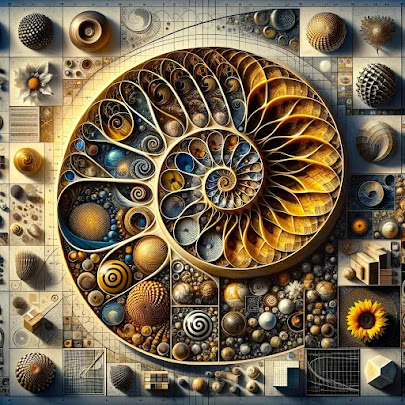For centuries, the Fibonacci sequence has captured the imagination of mathematicians, scientists, and artists. It is a mesmerizing numerical pattern that intertwines the beauty of mathematics with the intricacies of the natural world. At its core, the Fibonacci sequence unfolds in which each number emerges as the sum of the two preceding it, starting intriguingly with 0 and 1.
This sequence spirals onward: 0, 1, 1, 2, 3, 5, 8, 13, 21, 34, and beyond. Ancient Indian mathematics holds the seed of the Fibonacci sequence's origin, with the distinguished Indian mathematician Pingala, who lived around 200 BCE, laying its foundational concepts. Yet, it was Leonardo of Pisa, known as Fibonacci, who, in the 13th century, unfurled this sequence across the Western world, marking a pivotal moment in mathematical history. Through this article, we dive into the enthralling journey of the Fibonacci sequence, from its roots to its wide-reaching impacts across disciplines, illustrating its undiminished relevance and allure in today's world.
Important People
Leonardo Fibonacci is the cornerstone of exploring the Fibonacci sequence, leaving an indelible mark on its history. In 1202, his seminal work "Liber Abaci" introduced the sequence to understand rabbit population growth and championed the adoption of Hindu-Arabic numerals across Europe.
This advocacy paved the way for the widespread acceptance of the decimal system, revolutionizing mathematics and trade. Fibonacci's contribution extended beyond a mere sequence; it embodied a bridge between mathematical traditions, fostering a new era of numerical comprehension and application in Europe.
In the 19th century, another notable figure emerged, enriching the narrative of the Fibonacci sequence: French mathematician Edouard Lucas. Lucas's work formally defined the Fibonacci sequence, delineating its properties with precision and clarity. His intellectual curiosity led him to explore beyond Fibonacci numbers, culminating in the introduction of Lucas numbers.
These numbers, closely related to the Fibonacci sequence, share many properties, broadening the scope of its application and study. Lucas's contributions are pivotal, as they deepened the understanding of the Fibonacci sequence and linked it to a wider mathematical context.
Leonardo Fibonacci and Edouard Lucas form the bedrock of the Fibonacci sequence's history. While Fibonacci introduced this captivating sequence to the Western world, Lucas expanded its mathematical foundation, enriching its study and application. Their combined legacies influence mathematics and numerous fields that find harmony and patterns in the Fibonacci sequence. From plants' growth patterns to galaxies' structure, the sequence remains a testament to the universe's interconnectedness, guided by the insights of these two pivotal figures.
Exploring Fibonacci Sequence Applications
With its intriguing properties, the Fibonacci sequence finds resonance across various fields, exemplifying the universal language of numbers and patterns.
In aesthetics, the Golden Ratio is a testament to the sequence’s allure, symbolized by the Greek letter phi (φ). This ratio, found when one divides a number in the sequence by its immediate predecessor, gravitates towards approximately 1.6180339887 as the sequence progresses.
Artists, architects, and designers have harnessed this ratio for centuries, drawn to its natural balance and aesthetic perfection. The Golden Ratio guides the proportions of paintings, buildings, and even product designs, embodying a timeless appeal that resonates with the human psyche’s innate appreciation for symmetry and harmony.
Nature is a canvas for the Fibonacci sequence, revealing its patterns in the unlikeliest places. From the spiraling arrangement of seeds in sunflower heads to the distribution of leaves around a stem, the sequence dictates the rhythm of growth and form. This pattern ensures optimal exposure to sunlight and rain, underpinning the efficiency of natural selection. Even the branching of trees and the structure of pinecones unfold according to Fibonacci numbers, illustrating the profound connection between mathematical principles and the evolutionary strategies of the natural world.
The domain of music also embraces the Fibonacci sequence, as composers weave its numbers into the fabric of their compositions. By aligning the structure of their works with Fibonacci numbers, they craft harmonies and rhythms that resonate deeply with audiences.
This approach not only enriches the aesthetic quality of the music but also connects with listeners subconsciously, tapping into the natural predisposition towards patterns encoded within the sequence. The Fibonacci sequence, therefore, transcends its mathematical origins, becoming a tool for emotional expression and connection in the hands of skilled composers.
The Fibonacci sequence is a powerful tool underpinning algorithms and problem-solving strategies in computer science. It aids in generating pseudorandom numbers, enhancing the unpredictability and security of data encryption. Furthermore, the sequence optimizes search algorithms, making data retrieval more efficient and reducing computational costs.
Dynamic programming problems, too, benefit from the sequence’s properties, allowing for elegant and efficient solutions. Thus, the Fibonacci sequence proves indispensable, driving innovations and efficiencies in the digital realm.
Conclusion
The Fibonacci sequence captivates with its mathematical elegance and historical depth, weaving a thread through diverse fields and showcasing the world's interconnectedness. This fascinating pattern, simple in its formation yet profound implications, has intrigued scholars and the public for centuries. Its applications, ranging from the natural beauty observed in the arrangement of leaves and the spiraling of shells to the deliberate compositions of art and music, highlight a universal resonance that transcends cultural and disciplinary boundaries.
Artists draw on the sequence to achieve aesthetic perfection, while scientists and mathematicians see in it the underlying order of the universe. The sequence's role in modern technology, especially computer science, underscores its relevance and utility in solving complex problems and optimizing processes. As it bridges the ancient and the contemporary, the Fibonacci sequence is a testament to the timeless pursuit of knowledge and understanding.
Looking forward, the study of the Fibonacci sequence promises to continue inspiring innovations and discoveries across disciplines. It beckons future generations of mathematicians, scientists, and artists to explore its depths, challenging them to uncover new applications and insights. Thus, the Fibonacci sequence remains a topic of academic interest and a symbol of the human quest for harmony and understanding in the vast tapestry of existence.














0 Comments